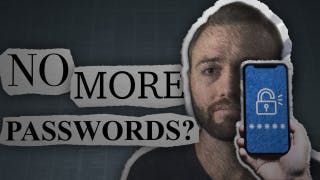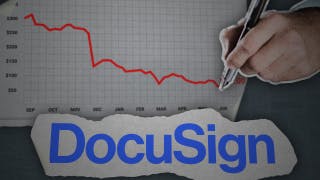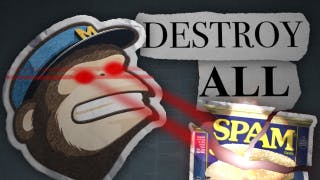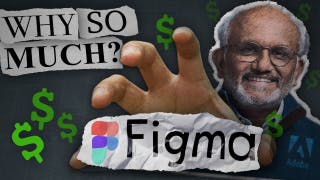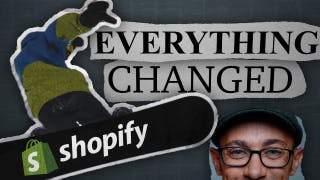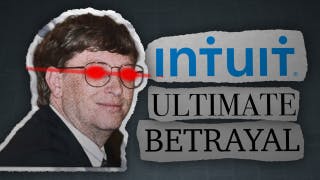
Slack and the war of the words
Does the Slack that sound give you a spike of anxiety? Maybe you fearfully checked your phone or got excited that someone was finally getting back to you. Whatever it was, I’m sure at the very least you’re familiar with Slack.
Personally, I don’t know what I would do without it. Slack lets me communicate with my coworkers, review company updates, and catch up on important details with project collaborators. What’s great is it’s all asynchronous meaning communication isn’t dependent on responding immediately. While it may not be the email killer that some folks have preached, it definitely provides value.
Slack is the fastest growing SaaS company today and (possibly) of all time. While Slack is inherently a business communication tool, its value lies in how it helps people work together. Slack has owned this niche for years, and managed to get a grip on the market before megacorps like Google, Meta, and Microsoft.
Slack is now integrated into the Salesforce ecosystem, joining the company in a near $30 billion acquisition in 2021. With the backing of a SaaS legend in Salesforce, Slack is well equipped to stay on top of a market that they helped pioneer.
As we speak though, a battle is brewing between these companies. So, which collaboration tool will reign supreme? Yes, Slack is leading the way, but will it always be able to fend off the threat that Google, Meta, and Microsoft pose? If you have thoughts, make sure you let me know. For now, let’s dive deep into the origins of this kind of communication, early industry beginnings, and finally what makes Slack such a prime example to learn from.
But first, if you like this kind of content and want to learn more, subscribe to get in the know when we release new episodes.
Lessons from the Top
Slack’s focus on user experience was established early on, maybe before they even knew it. Slack was initially created out of a need for the founders themselves. They needed a reliable communications tool that could eliminate the barriers of communicating across multiple time zones. And as they built it, they did so from a user's perspective and with the experience they wanted and needed in mind.
Today, Slack is the fastest-growing SaaS company, and user experience is still a primary focus. So what can we learn? It’s all about the user experience. If you’re not providing a great experience, you simply won’t last.
- Looks do matter (in SaaS)
Enterprise software has a reputation for having boring design; however, Slack did not follow. They hired a team early on to create something fun and pleasing to look at and, ultimately, to make you want to use it.
And this is backed by data as it shows that people with a positive affinity to a company's design are willing to pay about 20%-25% more. Additionally, individuals with a positive perception of the company’s design have roughly 8%-12% better net retention than those who were neutral or had a negative perception. - Maximizing the freemium model
Slack took the freemium model to another level. Many might even say they gave away too much. But Slack went all in and provided a ton of value. By making a huge chunk of Slack's functionality available for freemium users, it was able to appeal to small and mid-sized teams. - Integrations are a must
Slack has over 2,400 apps available in its Slack App Directory in addition to custom apps. It's integration ability adds that much more value as it truly creates a cohesive platform for your to work from.
And, customers with more integrations are willing to pay anywhere between 8%-30% more for the same core product.
Background
The main purpose of instant messaging (IM) is to ensure that all employees not only communicate, but also collaborate in a highly efficient manner through a variety of methods that go beyond merely sending and receiving messages. Interestingly enough, one of the earliest instances of this sort of collaboration can be attributed to an American President.
On August 15th, 1971 Richard Nixon announced a ninety-day wage-price freeze in an attempt to ease an inflationary boom. At the time the Office of Emergency Preparedness (OEP) was an office that advised and assisted the president in all things involving emergency preparedness policy. The OEP director led a conference call with 25 regional officers. “Anyone have any problems,” he asked. This was largely greeted with silence. The OEP needed to exchange information between academics and networking experts that could help the government better respond to a situation. With a situation like this, there were a lot of issues.
Murray Turoff was a computer scientist working in the OEP. After the call, he took a teletype home, worked round the clock, and four days later came back with a working version of the Emergency Management Information System and Reference Index (EMISARI). This made it possible for participants to submit responses at any time and at any point in the discussion. Government telephone lines were connected to remote teletype terminals and responses were limited to 10 lines (to prevent lengthy government memos). It made it possible for the OEP to ensure that policy interpretation was correct in all regions. Slack didn’t exist yet, but Murray Turoff managed to see the future and is largely credited with pioneering the chat and collaboration space decades before it existed.
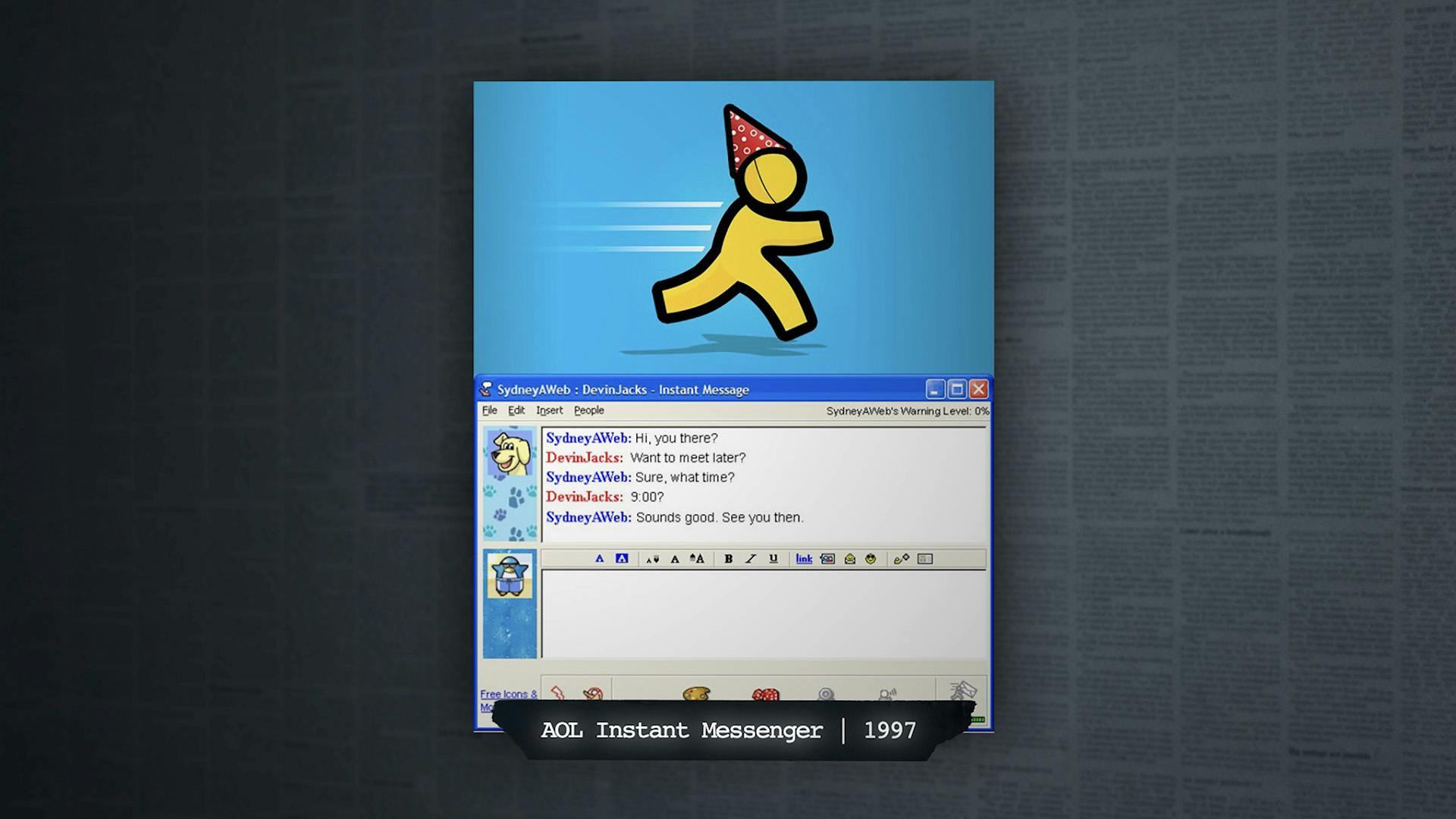
It wasn’t until the 1990s that commercial products started to emerge. We saw the likes of AOL Instant Messenger 1997, Yahoo! Pager (1998), and Microsoft’s MSN Messenger in 1999. These were by no means high level work collaboration tools, but they did get the general populace interested in the tech. It wasn’t until instant messaging became ingrained in our everyday actions — social media, checking email, and mobile devices — that these chat platforms truly gained traction. Beginning in 2002, Apple computer users could seamlessly log on to Apple's iChat. Then came Google Talk in 2005, which allowed Gmail users to access the platform with their email contacts as soon as they logged on. It’s important to note though, that while instant messaging became an everyday application in the 2000s and early 2010s, no company had quite cracked the code on how to use it within the business world effectively. But all that changed in 2014.
Early Leaders
Stewart Butterfield was working on a game called Glitch with his team at Tiny Speck. They used an internal communication tool to communicate across offices. Initially, Butterfield had no intention of commercializing the new platform. But upon realizing that he had something more than just an internal communications tool on his hands, Glitch was ditched. In order to make the tool more market-worthy through refinement, Butterfield and his team cajoled their friends to try out the product. Before long, much bigger teams were demoing Tiny Speck's newest invention willingly. While the tool itself was first made available to the public in February 2014, it wasn't until August of that year that it gained another name: Slack.
Within a day of its launch, the new communication tool had racked up over 8,000 signups. By April of 2014, Slack had more than 15,000 paid users and 60,000 daily active users. One year later, Slack was worth nearly $3 billion and boasted more than 750,000 active users. What started as an internal communications tool was swiftly becoming a promising, fast-growing entity. By 2016, Slack was reportedly being used by 77% of Fortune 100 companies.
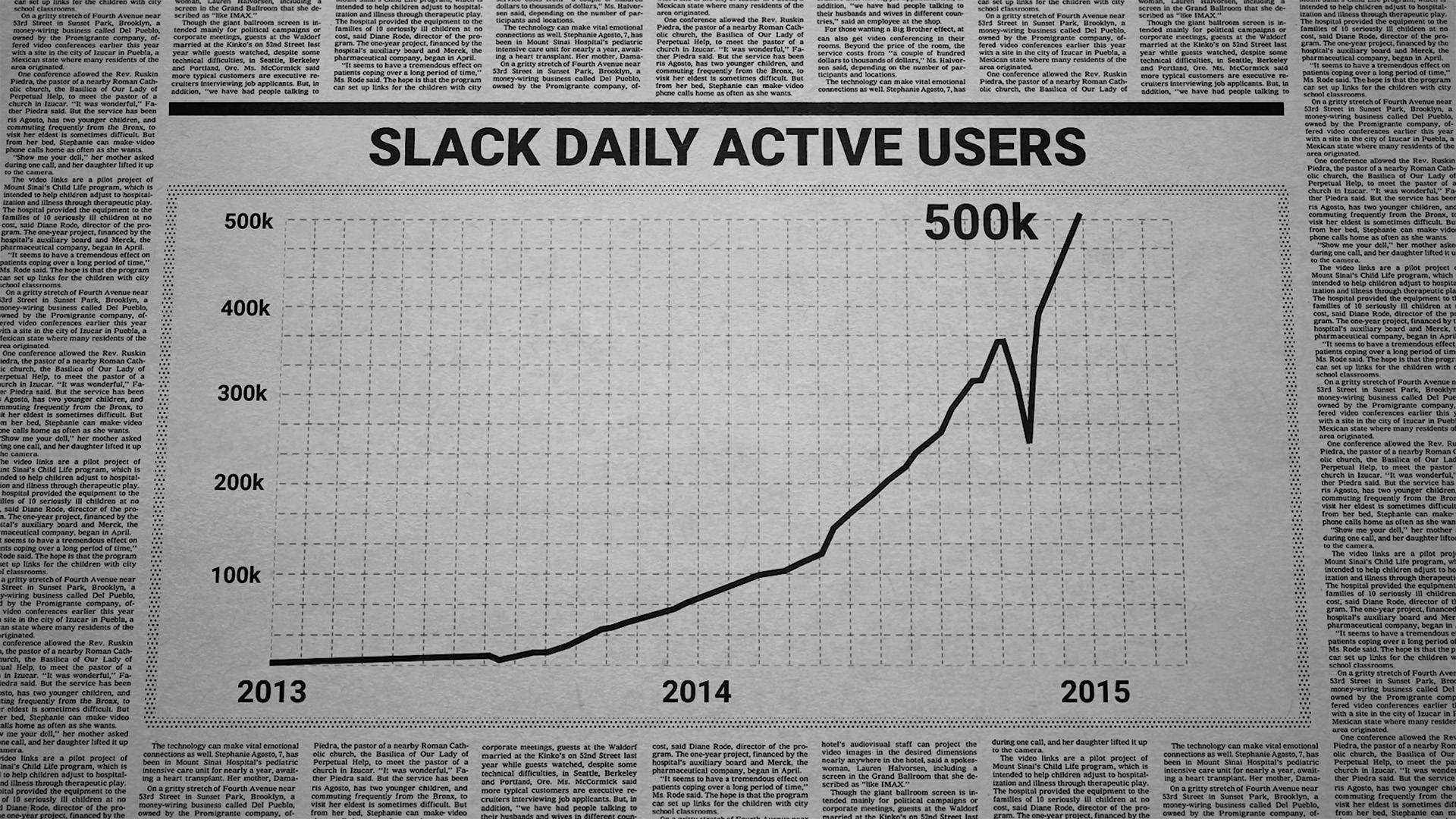
The period between 2016 and 2020 was a defining moment in the history of Slack. Butterfield and his team knew that in order to keep their user base happy and continually attract new funding, they could not merely depend on the app's core features. They needed to innovate further. To that end, Slack added more features, including threaded messaging and Slack Connect. The company also launched 50+ integrations as part of its ever-growing, developer-inspired app directory. In June 2019, Slack finally went public. With its DPO (a non-conventional IPO), the Butterfield-led company was able to bypass the closed-door process of raising capital and subsequently hasten its access to the broader public capital market. Its value at the time sat at $19 billion.
Given that Slack had virtually no competition in the collaboration tools market, big-league legacy companies saw the opportunity to take advantage of Slack’s success. These companies had prior experience running IM programs, so they were able to enter the market relatively quickly. Facebook (now Meta) launched Workplace in October of 2016. Microsoft launched Teams in March of 2017 and finally came Google with Workspace in October of 2020. Out of all three, Microsoft Teams has been the one able to truly give Slack a run for its money (more on them in a bit). In late 2020, Salesforce announced plans to acquire Slack for a cool $27.7 billion. For Slack, the merger was incredibly beneficial in that it afforded the company more resources for competing with the other tech giants.
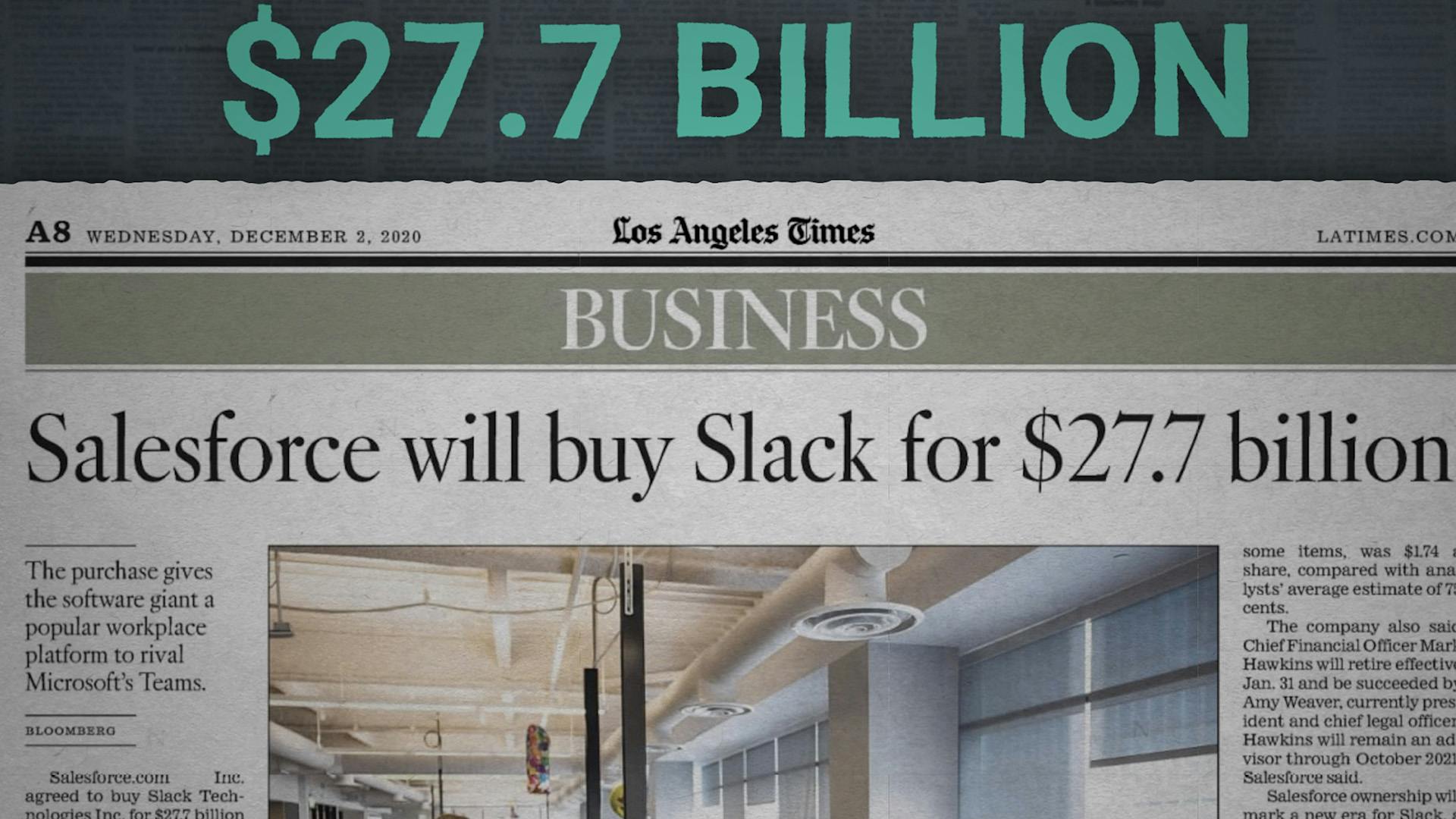
Reasons for success
Slack’s success came as a result of consistent effort and smart and timely business moves made in the years prior to 2020. First off, Slack boasts an incredibly appealing design. Enterprise software is notorious for being dull, boring, and lifeless. To stand out, Slack hired design firm MetLab to turn its early prototype into a thing of beauty.
A huge part of Slack's consistent success over the years can be attributed to its adoption of the freemium model. With this model, customers start off as non-paying users. They then upgrade to become paying customers if they want to access more advanced functionality. Slack took the freemium model to an extreme by packing the no-cost version with essential features for teams. The only real differences between the paid and free version are the number of messages that can be searched or indexed, and how many integrations teams can connect to. By making a huge chunk of Slack's functionality available for freemium users, the company was able to appeal to small and mid-sized teams interested in buying the product.
Integrations also make Slack an effective collaboration tool because they allow it to bring work into a centralized location. As of 2019, Slack allowed paying users to connect to over 1,500 apps in its directory (now over 2,400), as well as hundreds of thousands of custom applications and integrations. Customers with more integrations within their product appear to be willing to pay between 10 and 30% more than those without integrations, as we found in a ProfitWell study.
Another reason for success is Slack’s "magic number." Slack knows that users who send 2,000 messages are much more likely to stick around and end up paying for the product, helping to identify targets for expansion. The free tier is set up so that users can search 10,000 of their team’s messages. This might seem like a lot, but as companies grow, more and more messages are being sent. Top that off with a 10-app integration limit. As companies need more integrations and send more messages, upgrading to the paid plan makes a lot of sense. When you grow, Slack grows.
And Slack needs this growth especially with the opposition they're up against. For one, both Google and Microsoft have tools that are already widely used by SaaS operators. It’s easier to convert users when they are already in your ecosystem. Further, Google, Microsoft, and Meta boast full-fledged video conferencing features, an area which Slack has yet to perfect.
Slack was growing at a ridiculous pace and boasted over 10 million active users by the end of 2019. In the two weeks following the World Health Organization's (WHO) announcement of an international pandemic, Slack's customer base grew by a whopping 25%, with tweets from CEO Stewart Butterfield stating that the platform had added another two million users. Facebook Workplace saw its user base improve by two million from May 2020 to May 2021. Microsoft Teams, on the other hand, claimed 70 million additional subscribers from April of 2020 to April of 2021.
So that’s it right? Game, set, match? Microsoft takes the crown? Not exactly. Microsoft includes Teams with Office 365. So users of Office 365 may not even be using Microsoft Teams, and instead supplementing it with Slack. Butterfield has said that many Slack customers use the 365 suite. However, it’s gotten heated enough that Slack has a pending antitrust complaint against Microsoft in the EU. Slack argues that Microsoft is using Office's market superiority to force millions of people to utilize Teams through this bundle. Whether or not that complaint will succeed in court remains to be seen. What is clear is that Microsoft, as well as Meta, pose a serious threat to Slack’s success. If their products are “good enough” it’s easy for them to convert a user base that is already hooked up.
Summary
For folks running a SaaS business, internal communication tools like Slack are more or less a no-brainer. We’ve come a long way since Murray Turoff’s initial try. Aside from promoting seamless communication between employees while in and out of the office, these tools help keep people engaged, motivated, and properly aligned with company culture and goals. Specifically, Slack drives the workplace in a way no other tool can, all while empowering real, meaningful team interactions that move the needle for any organization that cares to adopt it.
But Slack needs to be on their toes and fend off competition if it dreams of retaining its position as the leader of the workplace communication market. They need to maintain focus on customer-centric app functionalities. Providing a strong video conferencing feature would be a huge plus. While Slack may not be able to tap into users like Microsoft does with 365, the backing of the Salesforce customer base should prove fruitful.
Ultimately, the winner of the collaboration war is going to be the solution that makes it easiest for people to work together. With Google, Meta, Microsoft, and Slack all putting their best foot forward, it'll be interesting to see how this war plays out in the days to come. Who do you think will come out on top?
If you like this kind of content and want to learn more, subscribe to get in the know when we release new episodes.
1
00:00:00,366 --> 00:00:01,199
(Slack notification sound)
2
00:00:01,199 --> 00:00:02,340
- [Ben] Did you hear that?
3
00:00:02,340 --> 00:00:05,970
Did that sound just give you
just a little bit of anxiety?
4
00:00:05,970 --> 00:00:07,620
Maybe you fearfully checked your phone,
5
00:00:07,620 --> 00:00:09,420
or you got excited that someone was
6
00:00:09,420 --> 00:00:11,040
finally getting back to you.
7
00:00:11,040 --> 00:00:11,910
Whatever it was,
8
00:00:11,910 --> 00:00:14,490
I'm sure that you are familiar with Slack.
9
00:00:14,490 --> 00:00:16,470
- Slack is a lot more than just team chat.
10
00:00:16,470 --> 00:00:17,430
- Messaging is viral.
11
00:00:17,430 --> 00:00:18,263
- With Slack!
12
00:00:18,263 --> 00:00:19,740
- Can Microsoft end off Slack?
13
00:00:19,740 --> 00:00:21,360
- Slack is the fastest
growing SaaS company,
14
00:00:21,360 --> 00:00:22,770
possibly of all time.
15
00:00:22,770 --> 00:00:25,620
While Slack is inherently a
business communication tool,
16
00:00:25,620 --> 00:00:28,770
its value lies in how it
helps people work together.
17
00:00:28,770 --> 00:00:30,420
Slack has owned this niche for years
18
00:00:30,420 --> 00:00:33,480
and managed to get a grip on
the market before mega corps
19
00:00:33,480 --> 00:00:35,820
like Google, Meta, and, Microsoft.
20
00:00:35,820 --> 00:00:39,330
Slack is now integrated into
the Salesforce ecosystem,
21
00:00:39,330 --> 00:00:41,880
joining the company in a near-$30 billion
22
00:00:41,880 --> 00:00:43,920
acquisition in 2021.
23
00:00:43,920 --> 00:00:45,690
As we speak, though, a battle is brewing
24
00:00:45,690 --> 00:00:47,010
between these companies.
25
00:00:47,010 --> 00:00:48,720
Yes, Slack is leading the way,
26
00:00:48,720 --> 00:00:50,700
but will it always be able
to fend off the threat
27
00:00:50,700 --> 00:00:52,890
that Google, Meta, and Microsoft pose?
28
00:00:52,890 --> 00:00:54,720
If you have thoughts,
make sure you let me know
29
00:00:54,720 --> 00:00:56,010
in the comments down below.
30
00:00:56,010 --> 00:00:58,440
Let's dive deep into
the origins of this kind
31
00:00:58,440 --> 00:01:01,830
of communication, early industry
beginnings, and finally,
32
00:01:01,830 --> 00:01:05,010
what makes Slack such a
prime example to learn from?
33
00:01:05,010 --> 00:01:07,023
I'm Ben Hillman, and this is Verticals.
34
00:01:09,720 --> 00:01:11,820
The main purpose of tools
like Slack is to ensure
35
00:01:11,820 --> 00:01:13,800
that all employees not only communicate
36
00:01:13,800 --> 00:01:16,350
but also collaborate in
a highly efficient manner
37
00:01:16,350 --> 00:01:18,150
through a variety of
methods that go beyond
38
00:01:18,150 --> 00:01:20,580
merely sending and receiving messages.
39
00:01:20,580 --> 00:01:22,260
One of the earliest instances of this sort
40
00:01:22,260 --> 00:01:25,830
of collaboration can be attributed
to an American president.
41
00:01:25,830 --> 00:01:28,650
On August 15th, 1971,
Richard Nixon announced
42
00:01:28,650 --> 00:01:31,170
a 90-day wage price
freeze in an attempt to
43
00:01:31,170 --> 00:01:32,970
ease an inflationary boom.
44
00:01:32,970 --> 00:01:35,970
- [Nixon] I am today ordering a freeze.
45
00:01:35,970 --> 00:01:38,370
- [Ben] At the time, the Office
of Emergency Preparedness
46
00:01:38,370 --> 00:01:40,650
was an office that advised
and assisted the president
47
00:01:40,650 --> 00:01:43,920
in all things involving
emergency preparedness policy.
48
00:01:43,920 --> 00:01:45,870
They were basically a predecessor to FEMA.
49
00:01:45,870 --> 00:01:48,120
The OEP director led a conference call
50
00:01:48,120 --> 00:01:50,647
with 25 regional officers.
51
00:01:50,647 --> 00:01:53,370
"Anyone have any problems?" He asked.
52
00:01:53,370 --> 00:01:55,830
This was largely greeted with silence.
53
00:01:55,830 --> 00:01:57,870
The OEP needed to exchange information
54
00:01:57,870 --> 00:02:00,240
between academics and networking experts
55
00:02:00,240 --> 00:02:01,260
that could help the government
56
00:02:01,260 --> 00:02:03,390
better respond to a situation.
57
00:02:03,390 --> 00:02:06,360
A conference call was not going to cut it.
58
00:02:06,360 --> 00:02:09,420
Murray Turoff was a computer
scientist working in the OEP.
59
00:02:09,420 --> 00:02:11,580
After the call, he took a teletype home,
60
00:02:11,580 --> 00:02:13,770
worked around the clock,
and four days later
61
00:02:13,770 --> 00:02:15,930
came back with a working version of the
62
00:02:15,930 --> 00:02:19,410
Emergency Management Information
Systems and Reference Index
63
00:02:19,410 --> 00:02:20,430
or EMISARI.
64
00:02:20,430 --> 00:02:22,710
Don't worry, you don't need
to remember that acronym.
65
00:02:22,710 --> 00:02:23,790
But this made it possible
66
00:02:23,790 --> 00:02:25,620
for participants to submit responses
67
00:02:25,620 --> 00:02:28,110
at any time and at any
point in the discussion.
68
00:02:28,110 --> 00:02:30,030
They made it possible
for the OEP to ensure
69
00:02:30,030 --> 00:02:33,720
that policy interpretation
was correct in all regions.
70
00:02:33,720 --> 00:02:35,700
Slack didn't exist yet, and Murray Turoff
71
00:02:35,700 --> 00:02:38,550
didn't invent Slack, but he
managed to see the future
72
00:02:38,550 --> 00:02:40,290
and is largely credited with pioneering
73
00:02:40,290 --> 00:02:42,180
the chat and collaboration space.
74
00:02:42,180 --> 00:02:44,400
It wasn't until the 1990s
that commercial products
75
00:02:44,400 --> 00:02:45,510
started to emerge.
76
00:02:45,510 --> 00:02:48,780
We saw the likes of AOL
Instant Messenger in 1997,
77
00:02:48,780 --> 00:02:53,280
Yahoo Pager in 1998, and
Microsoft's MSN Messenger in 1999.
78
00:02:53,280 --> 00:02:55,680
It wasn't until instant
messaging became ingrained
79
00:02:55,680 --> 00:02:59,490
in our everyday actions like
checking social media, email,
80
00:02:59,490 --> 00:03:01,920
and using mobile devices
that these chat platforms
81
00:03:01,920 --> 00:03:03,390
truly gain traction.
82
00:03:03,390 --> 00:03:05,790
It's important to note, though,
that while instant messaging
83
00:03:05,790 --> 00:03:08,580
became an everyday application in 2000s
84
00:03:08,580 --> 00:03:10,800
and then the early 2010s,
85
00:03:10,800 --> 00:03:12,900
no company had quite cracked the code
86
00:03:12,900 --> 00:03:14,910
or even realized how to use it
87
00:03:14,910 --> 00:03:17,010
within the business world effectively.
88
00:03:17,010 --> 00:03:19,383
All of that was about to change in 2014.
89
00:03:20,820 --> 00:03:23,250
Stewart Butterfield was
working on a game called Glitch
90
00:03:23,250 --> 00:03:25,110
with his team at Tiny Spec.
91
00:03:25,110 --> 00:03:27,780
They used an internal
communication tool to communicate
92
00:03:27,780 --> 00:03:29,220
across offices.
93
00:03:29,220 --> 00:03:31,830
- The intention is that the
experience is very social.
94
00:03:31,830 --> 00:03:33,900
- Initially, Butterfield had no intention
95
00:03:33,900 --> 00:03:36,600
of commercializing the new platform, but
96
00:03:36,600 --> 00:03:38,760
upon realizing that he had something more
97
00:03:38,760 --> 00:03:41,100
than just an internal communications tool
98
00:03:41,100 --> 00:03:44,280
on his hands, Glitch was ditched.
99
00:03:44,280 --> 00:03:46,170
In order to make the
tool more market-worthy
100
00:03:46,170 --> 00:03:48,330
through refinement,
Butterfield and his team
101
00:03:48,330 --> 00:03:50,880
cajoled their friends
to try out the product.
102
00:03:50,880 --> 00:03:53,700
Before long, much bigger
teams were demoing Tiny Specs'
103
00:03:53,700 --> 00:03:55,380
newest invention willingly.
104
00:03:55,380 --> 00:03:57,300
While the tool itself
was first made available
105
00:03:57,300 --> 00:04:00,150
to the public in February
of 2013, it wasn't
106
00:04:00,150 --> 00:04:03,450
until August of that year
that it gained another name:
107
00:04:03,450 --> 00:04:04,320
Slack.
108
00:04:04,320 --> 00:04:05,340
Within a day of its launch,
109
00:04:05,340 --> 00:04:08,730
the new communication tool had
racked up over 8,000 signups.
110
00:04:08,730 --> 00:04:12,630
By April of 2014, Slack had
more than 15,000 paid users
111
00:04:12,630 --> 00:04:15,300
and 60,000 daily active users.
112
00:04:15,300 --> 00:04:18,390
One year later, Slack was
worth nearly $3 billion
113
00:04:18,390 --> 00:04:21,660
and boasted more than
750,000 active users.
114
00:04:21,660 --> 00:04:23,820
What started as an internal
communications tool
115
00:04:23,820 --> 00:04:27,540
was swiftly becoming a
promising, fast-growing entity.
116
00:04:27,540 --> 00:04:29,730
By 2016, Slack was reportedly being used
117
00:04:29,730 --> 00:04:33,240
by 77% of Fortune 100 companies.
118
00:04:33,240 --> 00:04:36,480
The period between 2016 and
2020 was a defining moment
119
00:04:36,480 --> 00:04:38,160
in the history of Slack.
120
00:04:38,160 --> 00:04:40,860
Slack added more features
including credit messaging
121
00:04:40,860 --> 00:04:42,390
and Slack Connect.
122
00:04:42,390 --> 00:04:45,660
The company also launched
50 plus integrations as part
123
00:04:45,660 --> 00:04:49,050
of its ever-growing
developers-inspired app directory.
124
00:04:49,050 --> 00:04:52,830
In June of 2019, Slack finally went public
125
00:04:52,830 --> 00:04:55,590
with its DPO of non-conventional IPO,
126
00:04:55,590 --> 00:04:59,370
the Butterfield-led company
was now valued at $19 billion.
127
00:04:59,370 --> 00:05:02,160
Given that Slack virtually
had no competition early on
128
00:05:02,160 --> 00:05:04,110
in the collaboration tools market,
129
00:05:04,110 --> 00:05:06,480
big league legacy companies
saw the opportunity to
130
00:05:06,480 --> 00:05:08,880
take advantage of Slack's success.
131
00:05:08,880 --> 00:05:12,030
These companies had prior
experience running IM programs
132
00:05:12,030 --> 00:05:13,650
in the 1990s and 2000s,
133
00:05:13,650 --> 00:05:17,160
so they were able to enter
the market relatively quickly.
134
00:05:17,160 --> 00:05:21,270
Facebook, now Meta, launched
Workplace in October of 2016,
135
00:05:21,270 --> 00:05:24,000
Microsoft launched Teams in March of 2017,
136
00:05:24,000 --> 00:05:28,470
and finally came Google with
Workspace in October of 2020.
137
00:05:28,470 --> 00:05:30,720
Out of all three, it's
Microsoft Teams that has
138
00:05:30,720 --> 00:05:33,060
truly been able to give
Slack a run for its money,
139
00:05:33,060 --> 00:05:35,730
but we'll talk about them in a bit.
140
00:05:35,730 --> 00:05:38,910
In 2020, Salesforce announced
plans to acquire Slack
141
00:05:38,910 --> 00:05:42,150
for a cool $27.7 billion.
142
00:05:42,150 --> 00:05:44,880
For Slack, the merger was
incredibly beneficial in that
143
00:05:44,880 --> 00:05:47,370
it afforded the company
more resources for competing
144
00:05:47,370 --> 00:05:48,903
with the other tech giants.
145
00:05:50,940 --> 00:05:52,830
A huge part of Slack's consistent success
146
00:05:52,830 --> 00:05:54,030
over the years can be attributed
147
00:05:54,030 --> 00:05:56,010
to its adoption of the freemium model.
148
00:05:56,010 --> 00:05:58,350
Slack took the freemium
model to an extreme
149
00:05:58,350 --> 00:05:59,880
by packing the no-cost version
150
00:05:59,880 --> 00:06:02,100
with essential features for teams.
151
00:06:02,100 --> 00:06:04,710
The only real differences
between the paid and free version
152
00:06:04,710 --> 00:06:07,590
are the number of messages
that can be searched or indexed
153
00:06:07,590 --> 00:06:10,800
and how many integrations
teams can connect to.
154
00:06:10,800 --> 00:06:14,190
By making a huge chunk of
Slack's functionality available
155
00:06:14,190 --> 00:06:17,010
for free users, the
company was able to appeal
156
00:06:17,010 --> 00:06:19,470
to small and mid-sized teams interested
157
00:06:19,470 --> 00:06:21,180
in buying their product early on.
158
00:06:21,180 --> 00:06:24,090
Integrations also make Slack
an effective collaboration tool
159
00:06:24,090 --> 00:06:25,770
because they allow it to bring work
160
00:06:25,770 --> 00:06:27,840
into a centralized location.
161
00:06:27,840 --> 00:06:30,600
As of 2019, Slack allowed
paying users to connect
162
00:06:30,600 --> 00:06:33,930
to over 1500 apps in its
directory, as well as hundreds
163
00:06:33,930 --> 00:06:37,050
of thousands of custom
applications and integrations.
164
00:06:37,050 --> 00:06:39,510
Customers with more integrations
within their product
165
00:06:39,510 --> 00:06:43,290
appear to be willing to
pay between 10 and 30% more
166
00:06:43,290 --> 00:06:44,820
than those without integrations,
167
00:06:44,820 --> 00:06:47,550
as we found in a ProfitWell study.
168
00:06:47,550 --> 00:06:50,520
Another reason for its success
is Slack's Magic Number.
169
00:06:50,520 --> 00:06:52,920
Slack knows that users
who send 2000 messages
170
00:06:52,920 --> 00:06:55,530
are much more likely to stick
around and end up paying
171
00:06:55,530 --> 00:06:59,460
for the product, helping to
identify targets for expansion.
172
00:06:59,460 --> 00:07:01,590
The free tier allows for a 90 day period
173
00:07:01,590 --> 00:07:03,390
before messages are deleted.
174
00:07:03,390 --> 00:07:05,580
I know that this might
seem like a lot, but
175
00:07:05,580 --> 00:07:09,030
as companies grow, more and
more messages are being sent.
176
00:07:09,030 --> 00:07:11,640
Top that off with a 10
app integration limit,
177
00:07:11,640 --> 00:07:13,170
these companies need more integrations
178
00:07:13,170 --> 00:07:15,150
and need to send more messages.
179
00:07:15,150 --> 00:07:18,150
Upgrading to the paid
plan makes a lot of sense.
180
00:07:18,150 --> 00:07:21,240
When you grow, Slack grows,
and Slack needs this growth,
181
00:07:21,240 --> 00:07:23,460
especially with the opposition
they are up against.
182
00:07:23,460 --> 00:07:25,680
For one, both Google
and Microsoft have tools
183
00:07:25,680 --> 00:07:27,930
that are already widely
used by SaaS operators.
184
00:07:27,930 --> 00:07:31,080
Further, Google, Microsoft, and Meta boast
185
00:07:31,080 --> 00:07:33,300
full-fledged video conferencing features,
186
00:07:33,300 --> 00:07:35,820
an area which Slack has yet to perfect.
187
00:07:35,820 --> 00:07:37,380
Slack was growing at a ridiculous pace
188
00:07:37,380 --> 00:07:41,100
and boasted over 10 million
active users by the end of 2019.
189
00:07:41,100 --> 00:07:43,230
In the two weeks following
the WHO's announcement
190
00:07:43,230 --> 00:07:46,050
of an International Pandemic,
Slack's customer base grew
191
00:07:46,050 --> 00:07:48,360
by a whopping 25%
192
00:07:48,360 --> 00:07:51,120
with tweets from CEO Stewart
Butterfield confirming
193
00:07:51,120 --> 00:07:54,960
that the platform had added
another 2 million users.
194
00:07:54,960 --> 00:07:56,940
Facebook Workplace saw
its user base improve
195
00:07:56,940 --> 00:08:00,483
by 2 million from May
of 2020 to May of 2021.
196
00:08:01,530 --> 00:08:03,540
Microsoft Teams, on the other hand,
197
00:08:03,540 --> 00:08:06,000
claimed 70 million additional subscribers
198
00:08:06,000 --> 00:08:09,513
from April of 2020 to April of 2021.
199
00:08:10,680 --> 00:08:12,090
So that's it, right?
200
00:08:12,090 --> 00:08:13,110
Game set match?
201
00:08:13,110 --> 00:08:15,180
Microsoft takes the crown?
202
00:08:15,180 --> 00:08:16,170
Well ...
203
00:08:16,170 --> 00:08:17,670
Not exactly.
204
00:08:17,670 --> 00:08:20,670
Microsoft includes Teams
with Office 365, so users
205
00:08:20,670 --> 00:08:24,090
of Office 365 may not even
be using Microsoft Teams
206
00:08:24,090 --> 00:08:26,520
and instead, supplementing with Slack.
207
00:08:26,520 --> 00:08:29,250
Stewart Butterfield has said
that many Slack customers
208
00:08:29,250 --> 00:08:31,620
use the 365 Suite.
209
00:08:31,620 --> 00:08:33,510
However, it's gotten heated enough
210
00:08:33,510 --> 00:08:35,580
that Slack has a pending
antitrust complaint
211
00:08:35,580 --> 00:08:38,070
against Microsoft in the EU.
212
00:08:38,070 --> 00:08:40,380
Slack argues that
Microsoft is using Office's
213
00:08:40,380 --> 00:08:42,750
market superiority to
force millions of people
214
00:08:42,750 --> 00:08:45,480
to utilize Teams through its bundle.
215
00:08:45,480 --> 00:08:47,400
Whether or not that complaint will succeed
216
00:08:47,400 --> 00:08:49,020
in court remains to be seen,
217
00:08:49,020 --> 00:08:52,560
but what is clear is that
Microsoft, as well as Meta,
218
00:08:52,560 --> 00:08:55,320
pose a serious threat to Slack's success.
219
00:08:55,320 --> 00:08:57,930
If their products are just
good enough, it's easy
220
00:08:57,930 --> 00:09:00,330
for them to convert a user
base that is already hooked
221
00:09:00,330 --> 00:09:01,473
up to their ecosystem.
222
00:09:03,330 --> 00:09:05,100
For folks running a SaaS business,
223
00:09:05,100 --> 00:09:07,020
internal communication tools like Slack
224
00:09:07,020 --> 00:09:08,790
are more or less a no-brainer.
225
00:09:08,790 --> 00:09:11,940
We've come a long way since
Murray Turoff's initial try.
226
00:09:11,940 --> 00:09:14,010
Aside from promoting
seamless communication
227
00:09:14,010 --> 00:09:16,470
between employees while
in and out of the office,
228
00:09:16,470 --> 00:09:19,290
these tools help keep
people engaged, motivated,
229
00:09:19,290 --> 00:09:22,440
and properly aligned with the
company culture and goals,
230
00:09:22,440 --> 00:09:24,270
but Slack needs to be
on their toes and fend
231
00:09:24,270 --> 00:09:26,940
off competition if it dreams
of retaining its position
232
00:09:26,940 --> 00:09:29,970
as a leader of the workplace
collaboration market.
233
00:09:29,970 --> 00:09:31,500
They need to maintain focus on a
234
00:09:31,500 --> 00:09:33,660
customer-centric app functionalities,
235
00:09:33,660 --> 00:09:35,670
providing a strong video
conferencing feature
236
00:09:35,670 --> 00:09:38,070
would be a huge plus, for starters.
237
00:09:38,070 --> 00:09:40,260
Ultimately, the winner
of the collaboration war
238
00:09:40,260 --> 00:09:42,090
is going to be the solution
that makes it easiest
239
00:09:42,090 --> 00:09:43,830
for people to work together.
240
00:09:43,830 --> 00:09:46,440
With Google, Meta, Microsoft, and Slack
241
00:09:46,440 --> 00:09:48,570
all putting their best foot forward,
242
00:09:48,570 --> 00:09:50,430
it'll be interesting to
see how this war plays
243
00:09:50,430 --> 00:09:51,660
out in the days to come.
244
00:09:51,660 --> 00:09:53,670
Which one do you think
will come out on top?
245
00:09:53,670 --> 00:09:56,640
Will Slack maintain its
place as position leader?
246
00:09:56,640 --> 00:09:58,380
Let me know when the comments down below.
247
00:09:58,380 --> 00:10:01,383
From Paddle, I'm Ben Hillman,
and I'll see you next time.
